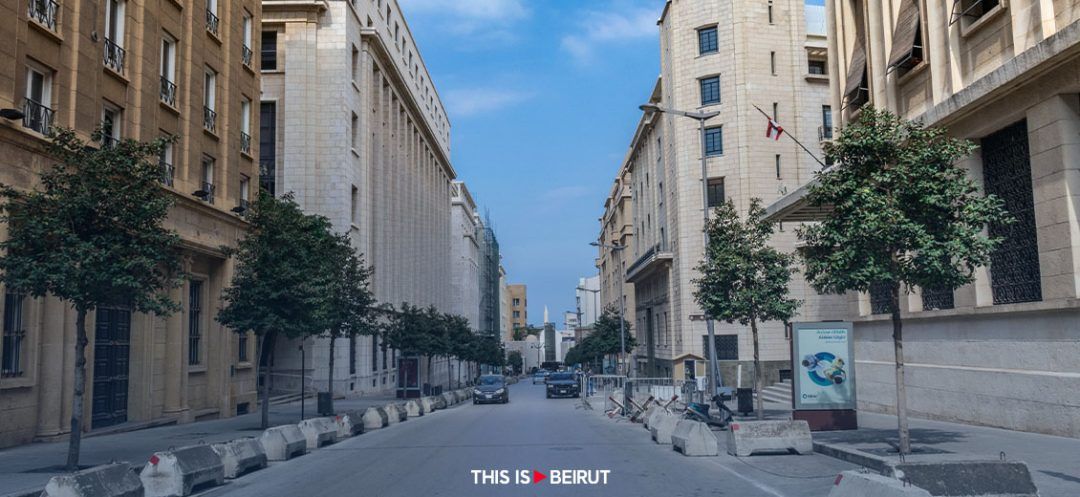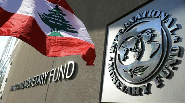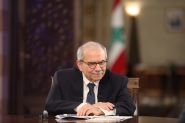
Poor Downtown Beirut, it does not deserve the fate it has endured for years. And, by a play of mirrors, poor Solidere, which does not deserve it either. The fates of the two are linked. And the current fleeting Ramadan revival will not change this torpor, which is not the result of chance, but rather the culmination of a long macabre journey.
Downtown has alternately been a scene of violent war, then of political tugs-of-war for or against Rafic Hariri, of blackmail, of latent Sunni-Shiite conflict and even of social clashes between the rich and the poor. All of this has brought downtown Beirut in its majority to its current state of desolation. Here is a brief historical overview of a conspiracy.
The rebuilt downtown was in the 1980s nothing more than a model kept with mothballs in the Oger offices in Riyadh. Once Hariri came to power, the dream became a reality. Solidere was then born, despite initial attacks on its status and the project itself. Meanwhile, everyone knew that the alternative of dealing with the cases of tens of thousands of rightful owners in the courts was a chimera. Whether the compensations were fair or not remains a subject of controversy.
Then, to the rightful owners, the compensation of the displaced who squatted in housing had to be added, especially those of the Jews of Wadi Abou-Jmil. For the record, a certain Ali, nicknamed Golden Ali (Ali el-Dahab), a relic of the militia, acted as an intermediary and pocketed ransom commissions from the squatters and from Solidere at the same time… until a building collapsed on the heads of the last occupants, while Ali was negotiating the last few thousand dollars. Ali has been in the public eye since then.
Once the land was cleared, infrastructure work could begin… and then it was stopped countless times. Either because of one of our security tremors, or following an archaeological discovery. “If it were a foreign company, it would have charged double the initial rate for all these unplanned stops,” said Georges Mouawad, the entrepreneur in charge at the time (Mouawad-Edde Group).
In terms of archaeology, the debate dragged on: should everything be kept as it is? Or should we fill in and build on top? Should transportable pieces be moved elsewhere?
In the end, there was a mix of all this: a museum (facing Annahar) on the history of Beirut aimed at bringing together the main discoveries, then excavations that remained outdoors (the Roman baths…). And an original idea: the building on Riad Solh square was supposed to dedicate one of its basements to the archaeological discoveries found on site and keep them as they are in situ. Except that this building, designed by Jean Nouvel, is still a gaping hole, at a standstill for years, as is the museum project.
After infrastructure, attacks on the urban plan followed. Solidere was able to preserve, or rebuild identically, 260 heritage buildings, with churches, mosques and synagogues. Everything was not perfect, though: historical landmarks (Martyrs’ Square, Debbas Square…) were lost, and the souks were an architectural failure. But the whole thing worked well and received international awards.
Land sales and projects multiplied frenetically. Locals and visitors from the Gulf filled the cafes and shops day and night. Families made it their Sunday outing. A proud Rafic Hariri acted as a tour guide to his distinguished guests. He brought his friend Jacques Chirac during his visits for a walk, and took a seat in the popular Petit Café facing Parliament. Where the trumpeter on duty improvised a cheerful Marseillaise…
Then the dark days began in 2004. Bashar al-Assad threatened, according to witnesses at The Hague tribunal, to bring downtown down on Hariri’s head if he did not extend Emile Lahoud’s mandate. Then the assassination, then the protests and counter-protests, then the 2006 war, then the sit-in tents of the shisha smokers who infested the space, then the muscular invasion of May 2008. And all else followed.
Downtown had barely recovered from its crises when the protesters denouncing the waste crisis of 2015 arrived, trying to reach Parliament. The area was then transformed into a bunker. Until Nabih Berri, years later, had the magnanimity to release it, glorified for the occasion by a rain of Hallelujahs and Hosannas.
Same story for the 2019 revolution, with "uncontrolled elements" targeting hotels and luxury shops this time. An opportunity to revive this post-militia vengeance against the jewel of downtown, always adorned with the Hariri, Sunni or “sumptuous” attribute, take your pick.
What about now? After years of more or less substantial profits, Solidere’s finances are permanently in the red, reflecting a general deleterious climate and a downtown that cannot restart. Projects are postponed: the extension of the souks, the grand store signed by Zaha Hadid in the middle, the east Marina on the reclaimed land of the former Biel, the coastal promenade on two or three levels that was to connect it to the Saint Georges marina, etc.
Financially, Solidere no longer has debts, but cash is in short supply because sales, the main source of revenue, are dwindling despite price cuts: no one will dare to invest hundreds of millions of dollars in a country adrift and a downtown so depreciated, especially by the country’s own authorities. Unprecedented.
However, far from blissful optimism, downtown has not said its last word. Millions of square meters are still available for construction. Entrepreneurs argue that you cannot permanently erase a prime location. And poets affirm that you cannot kill the soul of a city…
Read more




Comments